The Black Walnut Tree
(Juglans nigra)
by: Darin Lee
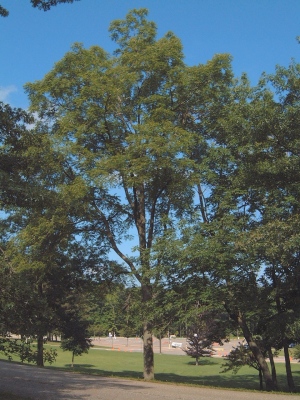
The Black Walnut has long been recognized as one of the most valuable North American trees. Unfortunately, ruthless cutting has caused its almost complete extinction in certain areas. American colonists used the wood for fence rails and fuel. People discovered the wood's excellent potential in cabinetry during Colonial times. During the civil war, the wood was used in the manufacture of gunstocks. In the First and Second World Wars, it was used for both gunstocks and airplane propellers. Today, it is the most popular wood used for fabricating solid and veneer furniture.
 Twigs - Stout, orange-brown to dark brown, roughened by large leaf scars, easily broken; pith pale brown, chambered. Buds gray, downy; side buds 1/6" long, end bud larger.
Twigs - Stout, orange-brown to dark brown, roughened by large leaf scars, easily broken; pith pale brown, chambered. Buds gray, downy; side buds 1/6" long, end bud larger.
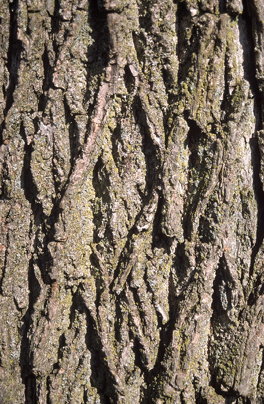 Bark - Dark brown to gray-black, with narrow ridges.
Bark - Dark brown to gray-black, with narrow ridges.
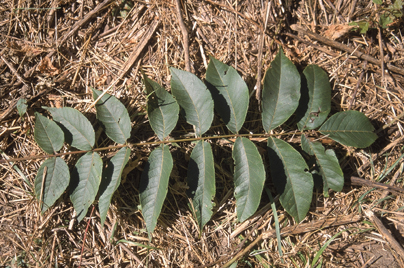 Leaves -
Compound, alternate; leaflets 15 to 23, each 3"-4" long, small-toothed; dark yellow-green above, paler, hairy below. End leaflet absent or very small. Main leaf-stem with very fine hairs.
Leaves -
Compound, alternate; leaflets 15 to 23, each 3"-4" long, small-toothed; dark yellow-green above, paler, hairy below. End leaflet absent or very small. Main leaf-stem with very fine hairs.
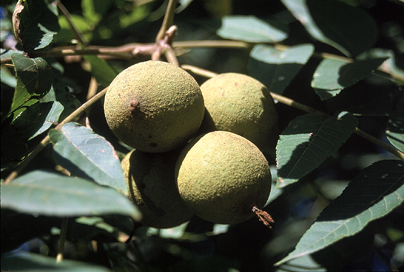 Fruit -
A round nut, 1"-2" in diameter, shell rough, covered with a thick, almost smooth, green spongy husk; oily kernel sweet. Flowers in drooping green catkins, appearing with the unfolding leaves, which is also true of butternut.
Fruit -
A round nut, 1"-2" in diameter, shell rough, covered with a thick, almost smooth, green spongy husk; oily kernel sweet. Flowers in drooping green catkins, appearing with the unfolding leaves, which is also true of butternut.
Locations in the United Sates where Black Walnuts can be found. 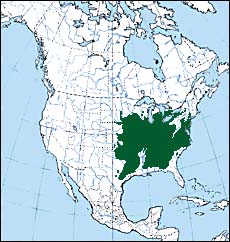

The black walnut is a large tree, 70-100 feet in height, 2-4 feet in diameter. In dense stands, it commonly produces a long, clear bole that supports a small, narrow, open crown. Grown in the open, it develops a short trunk and a massive, spreading crown. The root system of this tree is deep and widespread.
Some Links and References
Florida Forestry Information - Juglandaceae
For-1 Kentucky Forest Trees: How To Know Them
Contact info: Darin Lee darin.d.lee@ndsu.nodak.edu